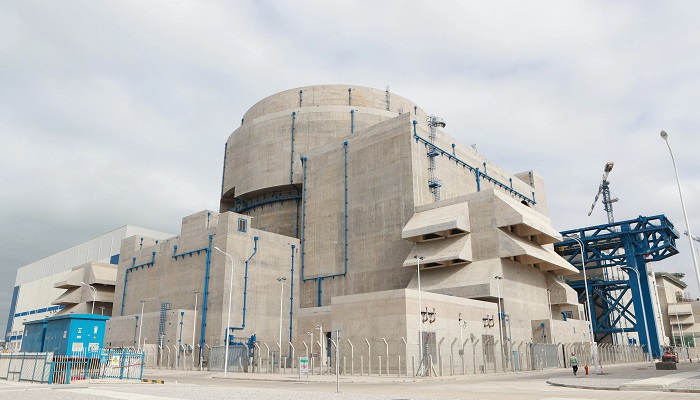Pushing away Changbiao Island could appear insignificant and small from the shores of China’s Fujian province. It is not at all. The China National Nuclear Corp. is constructing two fast-neutron nuclear breeder reactors there; the first one is expected to be connected to the grid in 2023, and the second one in 2026. Therefore, China might soon begin generating plutonium suitable for use in weapons there.
Because they produce more nuclear fuel than they can use, these reactors are known as breeder reactors. The reactors on Changbiao, according to Chinese authorities, are intended to produce 600 megawatts of electricity apiece, or just more than 1% of China’s whole nuclear power sector’s capacity. However, each reactor might potentially produce up to 200 kg of plutonium suitable for use in bombs every year, which would be sufficient to make 50 nuclear warheads. This possibility worries nuclear-arms-control experts in Western nations.
According to Princeton University physicist and nuclear-policy expert Frank von Hippel, China is in the midst of a significant buildup of its nuclear-weapon stockpile. In his opinion, these reactors serve one function, which is to create weapons-grade plutonium for that buildup.
Fast breeder reactors have been around for more than 50 years, since the nuclear community at large believed there wouldn’t be enough uranium fuel for the nuclear-power sector. Only 0.7 percent of natural uranium (U-235) is capable of supporting the fission processes required for energy production. The remaining material, U-238, cannot support a chain reaction. However, U-238 is easily converted into an isotope that can be used as plutonium-239 when subjected to neutron bombardment.
In breeder reactors, the core, which is encircled by a layer rich in U-238, uses plutonium as the fissile fuel. When the plutonium atoms are split, secondary neutrons are released that are grabbed by the U-238 and turn some of that U-238 into plutonium. Fast neutrons, or those with 1 megaelectron-volt or more of kinetic energy, are responsible for this process. Because liquid sodium does not slow down neutrons as much as liquid does, it is used as a coolant. Chemical separation is a method for removing weapon-grade plutonium from the blanket.
Despite the fact that numerous nations first considered the use of fast breeder reactors, just one of the breeder reactors created in France, Germany, the United Kingdom, or the United States made it into the twenty-first century before being shut down. Japan also created a fast breeder power reactor, which later turned out to be an expensive oversight and was decommissioned in 2016. Not so in Russia, China, or India. According to von Hippel, India has had a breeder-reactor model under development for almost 20 years. Russia built two rapid breeder reactors that are still in use today, beginning even earlier. However, due to their higher cost compared to standard water-cooled reactors, Russia has opted to delay the construction of another one until the 2030s.
A total of 200 kilogrammes of weapons-grade plutonium, or about 50 nuclear warheads, could be produced annually by each reactor.
The second stage in a three-stage effort to create fast breeder reactors to lessen the nation’s reliance on coal, the new breeder reactors in China are demonstration projects. The first phase was a 20 MW experimental fast breeder reactor that was started in 2000 but took a long time to finish and connect to the grid. It was located close to Beijing. The decision to proceed to the third stage of the construction of a commercial 1,000 MW breeder reactor will be made soon by the nation.
According to a graduate student in nuclear engineering at the University of California, Berkeley, Jake Hecla, the construction of a fast breeder reactor is not always an indicator that a nation plans to develop nuclear weapons. However, the West has misgivings about the reactors planned for Changbiao, especially in light of the recent revelation that China is building missile silos in three different places. Hecla estimates that China already has 3–5 tonnes of plutonium for warheads. 250 more silos are also being built. Therefore, he continues, they probably need additional plutonium. Building dual-purpose civilian infrastructure is one way to achieve this, and the fast breeder programme is ideal for it. The international reaction would be harsh and unfavourable if China switched on outdated reactors that manufacture plutonium. This offers a workaround for that.
China stopped freely reporting its civilian plutonium inventories to the International Atomic Energy Agency in 2018, which raises more questions. Hecla claims that other countries that own plutonium stockpiles, like France, Japan, and the United States, engage with the international community to reveal their plutonium stocks, offering certainty that the material is not being misused.
According to Hui Zhang, a specialist on China’s nuclear policies at Harvard University, these worries are legitimate given the growth of China’s nuclear arsenal and the upgrading of its nuclear weapons. However, he notes that there are simpler techniques to make plutonium suitable for use in weapons. According to Zhang, direct plutonium synthesis may produce substantially more fuel per year. It would have been preferable for China to build a plutonium fast-breeder reactor specifically for that purpose rather than a reactor for civilian use because the country already had nuclear weapons.
However, there is still a long way to go if Chinese weapon manufacturers are to measure up to the United States, which has almost 88 tonnes of plutonium.





































